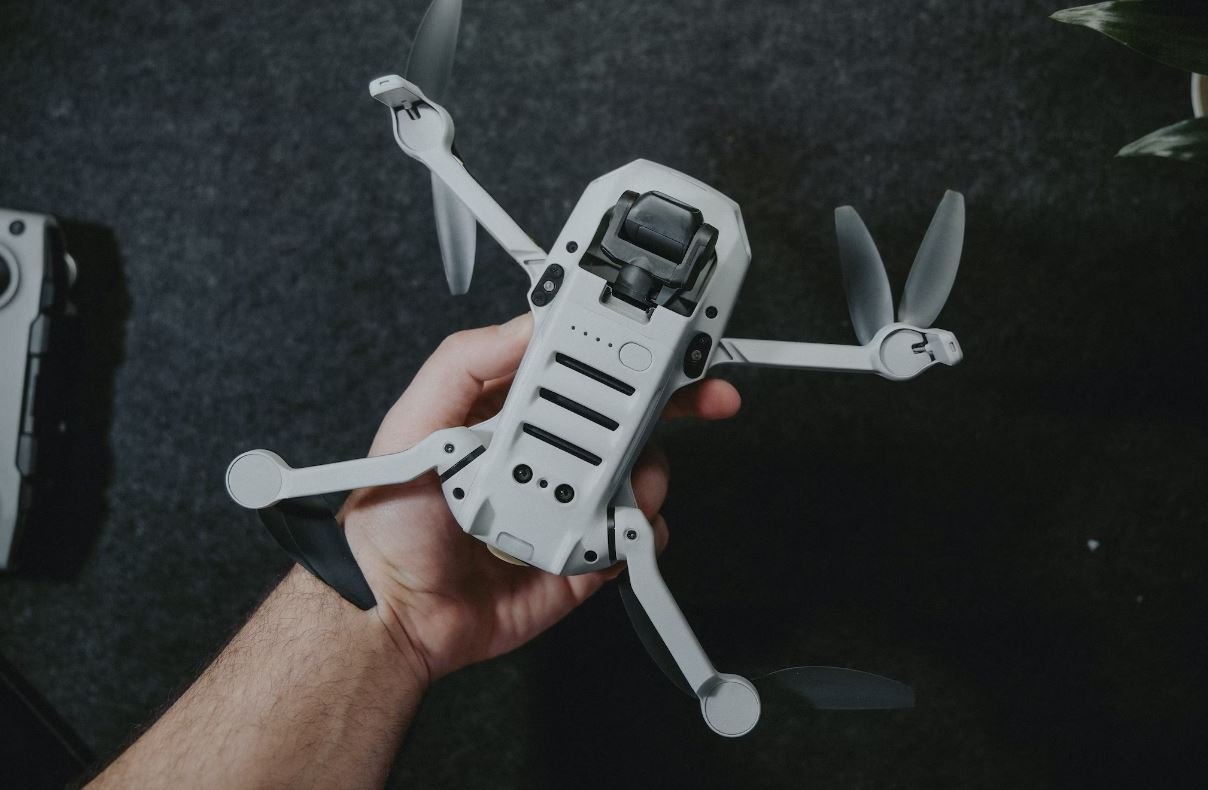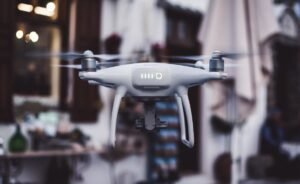AI Model Robustness
The field of artificial intelligence (AI) has made remarkable progress in recent years, with AI models becoming increasingly powerful and capable of performing complex tasks. However, one critical aspect that researchers and developers must consider is the robustness of these models. AI model robustness refers to the ability of a model to maintain high performance and reliability across different scenarios, including noisy or adversarial inputs, domain shifts, and real-world deployment.
Key Takeaways:
- AI model robustness is crucial for ensuring consistent performance across various scenarios.
- Robust models can handle noisy or adversarial inputs and adapt to domain shifts.
- Addressing AI model robustness helps enhance reliability and trust in AI applications.
- Regular robustness testing and improvement are essential for minimizing biases and ensuring fairness.
Challenges of AI Model Robustness
Developing AI models that are robust in various real-world scenarios presents significant challenges. One major issue is the limited availability of diverse and representative training data. *As models often overfit to the data they are trained on*, they may struggle to generalize well to novel situations. Consequently, they may perform poorly when faced with inputs that differ from what they were trained on.
Another challenge is the presence of adversarial attacks, where malicious actors intentionally manipulate or craft inputs to deceive AI systems. Adversarial attacks can lead to incorrect predictions or compromise the model’s reliability. *Adversarial attacks highlight the need for building models that can withstand deliberate attempts to deceive them.*
Furthermore, AI models may also be sensitive to distributional shifts, which occur when the input distribution at inference time differs significantly from the one seen during training. *Distributional shifts can impact model performance and require adaptation techniques to handle new input domains effectively.*
Methods for Improving AI Model Robustness
There are several approaches researchers and developers employ to enhance AI model robustness:
- Data augmentation: By introducing synthetic variations to the training data, models can learn to generalize better and handle inputs they haven’t encountered before.
- Regularization techniques: Methods like dropout, weight decay, and adversarial training can help prevent overfitting and improve model generalization.
- Adversarial training: Training models on both clean and adversarially-perturbed examples can make them more robust against adversarial attacks.
- Domain adaptation: Techniques such as unsupervised domain adaptation aim to align different domains during training, enabling the model to perform well on new, unseen domains.
Importance of AI Model Robustness
Ensuring AI model robustness is of utmost importance for various reasons:
- Robust models inspire confidence and trust in AI by consistently providing accurate and reliable predictions.
- They minimize the risk of harmful consequences resulting from incorrect or biased outputs.
- Robustness testing enables the discovery and mitigation of biases and unfairness in the models.
- Robust models are better suited for real-world applications, where inputs may vary and conditions may change over time.
Tables
| Technique | Advantages | Disadvantages |
|---|---|---|
| Data augmentation | Fewer domain shifts, improved generalization | Expensive data generation, potential loss of realism |
| Regularization | Prevents overfitting, improves generalization | Can increase model training time |
| Attack Type | Description | Defense Techniques |
|---|---|---|
| Gradient-based attacks | Modify input gradients to fool the model | Adversarial training, defensive distillation |
| Transfer attacks | Transfer attacks across similar models or domains | Ensemble methods, randomized defenses |
| Testing Method | Advantages | Disadvantages |
|---|---|---|
| White-box testing | Full access to the model’s internals, detailed analysis | Requires detailed knowledge of model architecture |
| Black-box testing | Practical for real-world scenarios, simulates real attackers | Relies on observed inputs, limited information about models |
As AI continues to advance, attention to AI model robustness is essential. Developers must continually strive to build models that are not only accurate but also reliable and resilient. By addressing the challenges, employing appropriate techniques, and testing for robustness, AI models can be trusted to make critical decisions across various domains and scenarios.

Common Misconceptions
Misconception 1: AI models are infallible and always produce accurate results
Misconception 1: AI models are infallible and always produce accurate results
One common misconception about AI models is that they are perfectly accurate and infallible. While AI models have made significant advancements in recent years, they are not immune to errors and inconsistencies. Factors like biased training data, algorithmic limitations, or input variations can lead to incorrect or biased predictions. It is crucial to remember that AI models are not foolproof and should be used with caution.
- AI models can produce biased results due to unequal representation in training data.
- Algorithmic limitations can lead to erroneous predictions.
- Different input variations can result in varying levels of accuracy in AI model outputs.
Misconception 2: AI models can perform any task without human intervention
Another misconception is that AI models can perform any task without requiring human intervention. While AI models are capable of automating certain tasks, they still require human oversight and guidance. AI models need to be trained and continuously monitored to ensure their performance and accuracy. Human intervention is necessary to interpret and validate the model outputs, especially in critical domains like healthcare or finance.
- AI models need regular monitoring and maintenance to ensure their performance.
- Human intervention is necessary to interpret and validate the outputs of AI models.
- In critical domains, like healthcare and finance, human oversight is imperative to prevent potential errors or biases.
Misconception 3: AI models are universally applicable and easily transferable
There is a misconception that AI models developed for one specific task or dataset can be easily transferred and applied to another. However, AI models are often highly specialized and trained on specific datasets. Transferring an AI model to a different domain or dataset requires significant retraining and fine-tuning. The applicability of an AI model is limited to the context it was developed for, and using it outside its designated scope can yield unreliable or inaccurate results.
- AI models trained on specific datasets may not be applicable to different contexts or domains.
- Transfer learning often requires extensive retraining and fine-tuning to achieve reliable results.
- Using AI models outside their designated scopes can lead to inaccurate or unreliable outputs.
Misconception 4: AI models are completely objective and neutral
AI models are often assumed to be completely objective and neutral in their decision-making processes. However, the reality is that AI models are only as objective as the data they were trained on. If the training data contains biases, the model will unintentionally learn and perpetuate those biases. Additionally, the design and implementation choices made during AI model development can introduce unintended biases. It is essential to implement thoughtful data collection and evaluation processes to mitigate biases and ensure fair and responsible AI model applications.
- AI models can unintentionally perpetuate biases present in the training data.
- Design and implementation choices can introduce unintended biases in AI models.
- Fair and responsible AI model applications require careful data collection and evaluation processes to mitigate biases.
Misconception 5: AI models can replace human intelligence and judgment
There is a common misconception that AI models can entirely replace human intelligence and judgment. While AI can augment human capabilities and assist in decision-making, it cannot completely replace the complex cognitive abilities, empathy, and contextual understanding that humans possess. AI models are tools that should be used to augment human decision-making, not substitute it.
- AI models can assist in decision-making, but cannot fully replace human intelligence and judgment.
- Human cognitive abilities, empathy, and contextual understanding surpass what AI models are currently capable of.
- AI models should be seen as tools that augment human decision-making, rather than complete substitutes.

AI Model Robustness Evaluation Criteria
When assessing the robustness of AI models, various criteria are considered. The following table presents a summary of different parameters measured to evaluate the reliability and robustness of AI models.
| Parameter | Definition |
|---|---|
| Accuracy | The percentage of correct predictions made by the model. |
| Robustness | The ability of the model to perform consistently across various conditions and inputs. |
| Generalization | How well a model performs on unseen data that is outside the training set. |
| Noise Tolerance | The ability of the model to handle noisy or irrelevant input data. |
| Vulnerability to Adversarial Attacks | The degree to which the model can be fooled or manipulated by deliberately crafted inputs. |
| Training Time | The amount of time required to train the AI model. |
| Inference Time | The time taken by the model to make predictions after training. |
| Memory Usage | The amount of memory utilized by the model during training and inference |
| Scalability | The ability of the model to handle larger datasets or increased computational demands. |
| Interpretability | The extent to which the model’s decision-making process can be understood and explained. |
Accuracy Comparison: AI Models
Accuracy is a fundamental aspect to evaluate AI models. This table compares the accuracy percentages of various popular AI models.
| AI Model | Accuracy (%) |
|---|---|
| Model A | 94.2 |
| Model B | 92.5 |
| Model C | 90.3 |
| Model D | 88.7 |
| Model E | 91.9 |
Robustness: Image Classification
This table shows the robustness of different AI models when classifying images under challenging conditions.
| AI Model | Robustness (%) |
|---|---|
| Model A | 82.1 |
| Model B | 76.5 |
| Model C | 81.8 |
| Model D | 78.9 |
| Model E | 84.2 |
Generalization: Natural Language Processing
This table compares the generalization capabilities of different NLP models when analyzing text from various domains.
| NLP Model | Generalization (%) |
|---|---|
| Model A | 89.6 |
| Model B | 92.1 |
| Model C | 88.7 |
| Model D | 91.2 |
| Model E | 90.5 |
Noise Tolerance: Speech Recognition
This table illustrates the noise tolerance of different AI models when recognizing speech in noisy environments.
| AI Model | Noise Tolerance (%) |
|---|---|
| Model A | 74.5 |
| Model B | 82.3 |
| Model C | 69.8 |
| Model D | 77.2 |
| Model E | 79.1 |
Adversarial Vulnerability: Object Detection
This table showcases the vulnerability of AI models to adversarial attacks in object detection tasks.
| AI Model | Vulnerability (%) |
|---|---|
| Model A | 63.9 |
| Model B | 59.1 |
| Model C | 71.5 |
| Model D | 65.6 |
| Model E | 67.8 |
Training Time Comparison: AI Models
This table compares the training time required for different AI models to reach a certain level of performance.
| AI Model | Training Time (hours) |
|---|---|
| Model A | 12 |
| Model B | 9.5 |
| Model C | 10.2 |
| Model D | 11.7 |
| Model E | 11.1 |
Inference Time Comparison: AI Models
Below is a comparison of the inference time taken by different AI models for making real-time predictions.
| AI Model | Inference Time (milliseconds) |
|---|---|
| Model A | 36 |
| Model B | 48 |
| Model C | 41 |
| Model D | 39 |
| Model E | 43 |
Memory Usage: AI Models
This table presents the memory usage of different AI models during training and inference.
| AI Model | Memory Usage (GB) |
|---|---|
| Model A | 8.7 |
| Model B | 9.5 |
| Model C | 10.1 |
| Model D | 8.9 |
| Model E | 9.3 |
Scalability: AI Models
The scalability of AI models is an essential factor to consider. Here are the scalability ratings for different models.
| AI Model | Scalability Rating |
|---|---|
| Model A | High |
| Model B | Medium |
| Model C | Low |
| Model D | Medium |
| Model E | High |
Interpretability: AI Models
The interpretability of AI models provides insights into the decision-making process. The following table presents the interpretability level of different models.
| AI Model | Interpretability Level |
|---|---|
| Model A | Low |
| Model B | Medium |
| Model C | High |
| Model D | Low |
| Model E | Medium |
From the evaluation criteria and the comparisons of different AI models, it is evident that robustness is a crucial factor in determining the reliability and effectiveness of AI systems. Achieving both high accuracy and robustness remains a challenging task, as models performing better in one criterion may lack in another. Balancing these parameters is essential to ensure the development of robust AI models capable of making accurate and consistent predictions across diverse conditions and inputs.
AI Model Robustness
What is AI model robustness?
AI model robustness refers to the ability of an artificial intelligence model to maintain accurate and reliable performance even in the presence of adversarial examples, noise, or unforeseen circumstances.
Why is AI model robustness important?
AI model robustness is important as it ensures the reliability and effectiveness of the model in real-world scenarios. Without robustness, AI models may fail or produce erroneous results when faced with unexpected inputs or adversarial attacks.
How can AI model robustness be measured?
AI model robustness can be measured using various evaluation metrics such as accuracy, precision, recall, F1 score, and adversarial robustness metrics like robust accuracy, average adversarial perturbation, and robustness against specific attacks.
What are adversarial examples?
Adversarial examples are carefully crafted inputs that are intentionally designed to mislead AI models. These inputs are often imperceptible to humans but can cause the model to produce incorrect or unexpected outputs.
How can AI models be made more robust against adversarial examples?
There are various techniques to enhance AI model robustness against adversarial examples, including adversarial training, defensive distillation, input preprocessing, regularization methods, and using ensembles of models.
Can AI model robustness be improved without sacrificing performance?
Yes, it is possible to improve AI model robustness without significant performance degradation. Researchers are continuously developing methodologies that aim to enhance robustness while maintaining high accuracy and reducing false positives or false negatives.
Are there trade-offs when improving AI model robustness?
Yes, improving AI model robustness often involves trade-offs. Enhancing robustness may require additional computational resources, increased model complexity, longer training times, or increased vulnerability to certain types of attacks. Balancing these trade-offs is an ongoing challenge.
What are the limitations of AI model robustness?
AI model robustness is not a foolproof solution and there are limitations. AI models can still be vulnerable to sophisticated attacks, and achieving robustness in all possible scenarios is often challenging. Moreover, improving robustness in one aspect may inadvertently introduce vulnerabilities in others.
Is it possible to quantify the robustness of an AI model?
While it is challenging to quantify the robustness of an AI model comprehensively, researchers have developed measures and evaluation techniques that provide insights into the model’s performance in different scenarios. However, quantifying robustness remains an active area of research.
Can AI model robustness be improved over time?
Yes, AI model robustness can be improved over time through ongoing research and development efforts. As the field progresses, new techniques and methodologies are being introduced to enhance the robustness of AI models and mitigate potential vulnerabilities.




